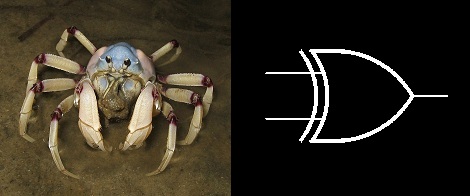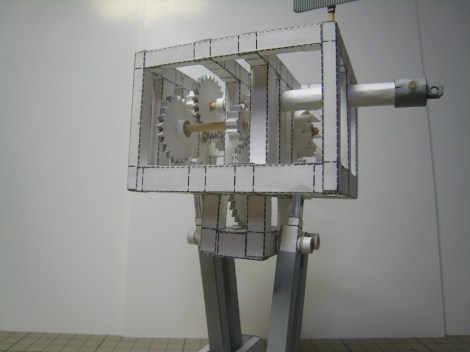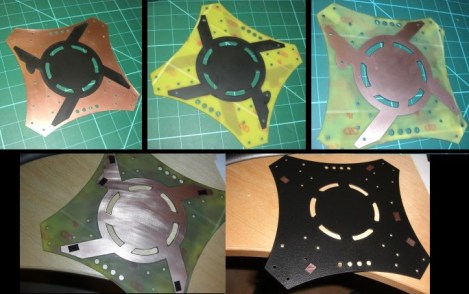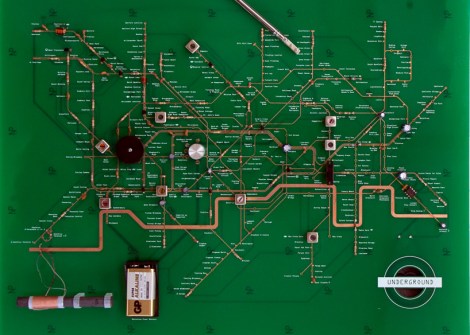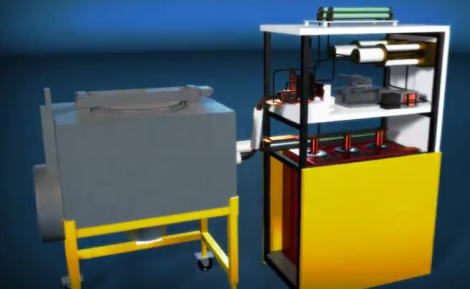
This machine is capable of shrinking coins. What you’re looking at is actually a 3D model of the Geek Groups impulse generator, which is called Project Stomper. The model is used to explain how induction shrinks a quarter to the size of a dime.
The grey chamber to the left is a reinforced containment device. It’s a safety feature to keep people in the same room as the Stomper safe from flying particles which may result from the forces this thing can put out. You see, it uses a mountain of magnetic energy to compress the edges of a coin in on itself.
As the video after the break illustrates, the main part of the machine on the right starts off by boosting mains voltage using a microwave oven transformer. This gets the AC to 2000V, which is then rectified and boosted further to get to 6000V DC. This charges three huge parallel capacitors which are then able to source 100,000A at 6 kV. When it comes time to fire, the charge is dumped into a coil which has the coin at its center. The result is the crushing magnetic field we mentioned earlier.
This isn’t a new concept, we featured a different coin crusher build in the early years of Hackaday’s existence.

